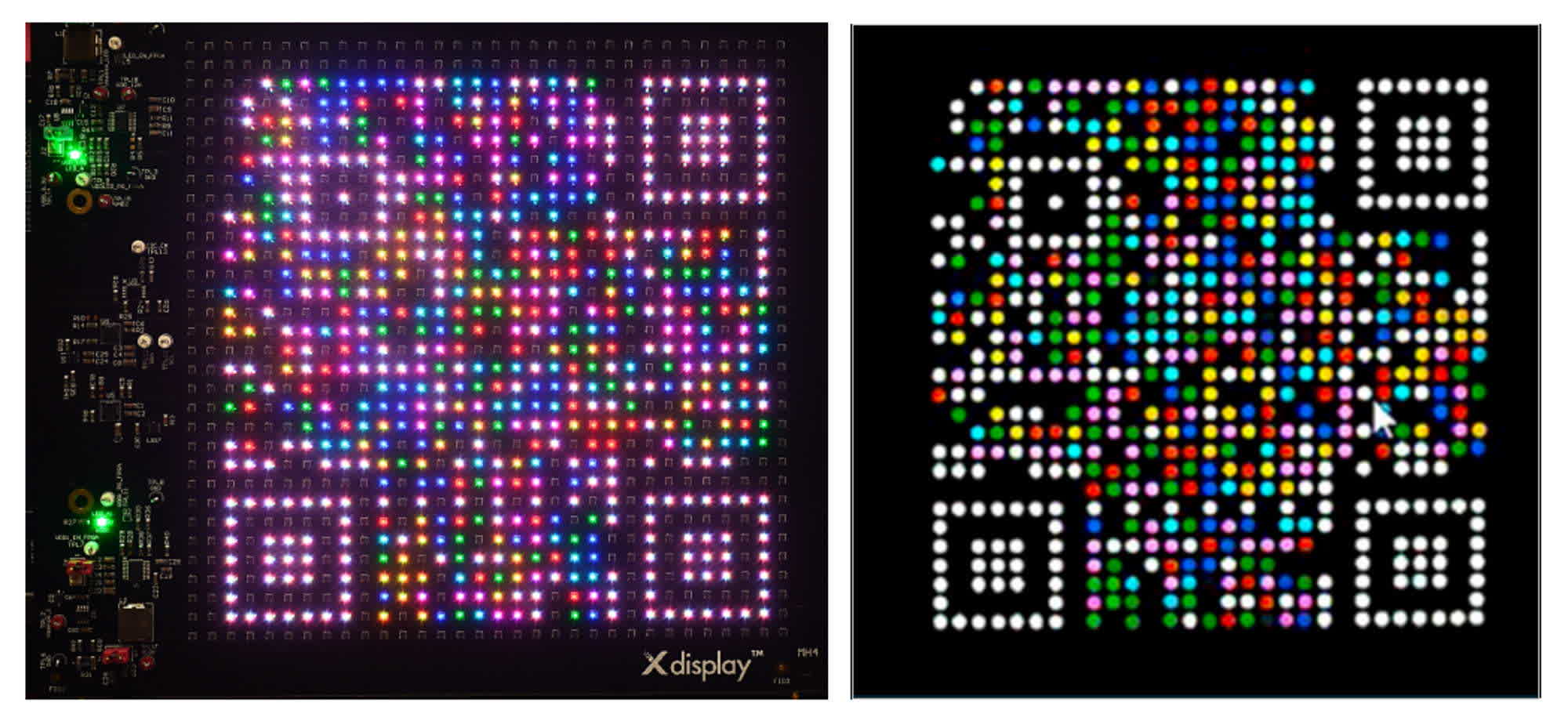The big picture: Despite promising massive, unprecedented improvements in both speed and power efficiency, optical technology has yet to become a common feature of modern chip design. Now, a display company claims it can take optical solutions to the next level – at least, when it comes to transmitting data between machines and chips.
X Display is focused on developing and licensing new intellectual property related to MicroLED and other display technologies. The North Carolina-based developer recently unveiled a novel application of the traditional "display" concept – one that transmits massive amounts of digital data through the air.
According to X Display, this optical connection can achieve data rates equivalent to a million frames per second, though no human will ever be looking at the other side of the screen.
A refresh rate of one million hertz would eclipse any prototype of high-refresh computer displays we know today, but no gaming or visual applications are planned for this technology. What is likely the fastest "display" ever reported is designed purely for machine-to-machine communication, in keeping with X Display's other innovations.
The technology uses thousands of ultra-fast, multi-wavelength emitters that transmit digital data in parallel, X Display explained. The system dynamically writes and controls data across discrete sequential frames, with each frame consisting purely of light. On the receiving end, a high-speed camera captures the light and converts it back into digital bits and bytes.
X Display says its new intellectual property represents a breakthrough for free-space optical wireless communication systems. The solution is specifically designed to accelerate connectivity in AI data centers and other large-scale computing environments, where stable, cable-free communication links could enable significant gains in efficiency, scalability, and system reconfigurability.
By literally making data fly through the air, the technology could eliminate the need for complex fiber-optic cable bundles. This would simplify the configuration of xPU clusters and allow systems to dynamically adapt to changing bandwidth demands. The company also claims the system offers 2 – 3x greater energy efficiency compared to traditional 800G optical transceivers, making it a compelling option for future "green" data center and AI infrastructure initiatives.
"The capacity to dynamically transmit data at megahertz speeds through the air holds transformative promise for cloud infrastructure," said Nikhil Jain, X Display's director of OptoElectronics & strategic partnerships.
Following the development of what it calls the world's fastest display-based optical data link, X Display is now aiming to achieve terabit-per-second data rates and beyond. Potential use cases include optical data transmission, LiFi (light fidelity), digital media broadcasting, and other high-bandwidth communication applications.

